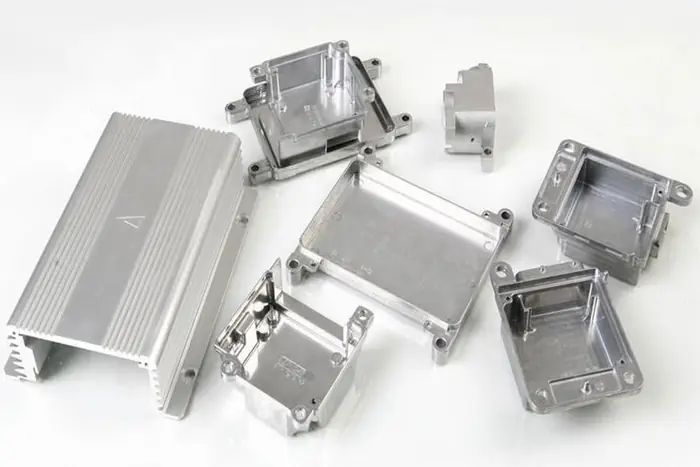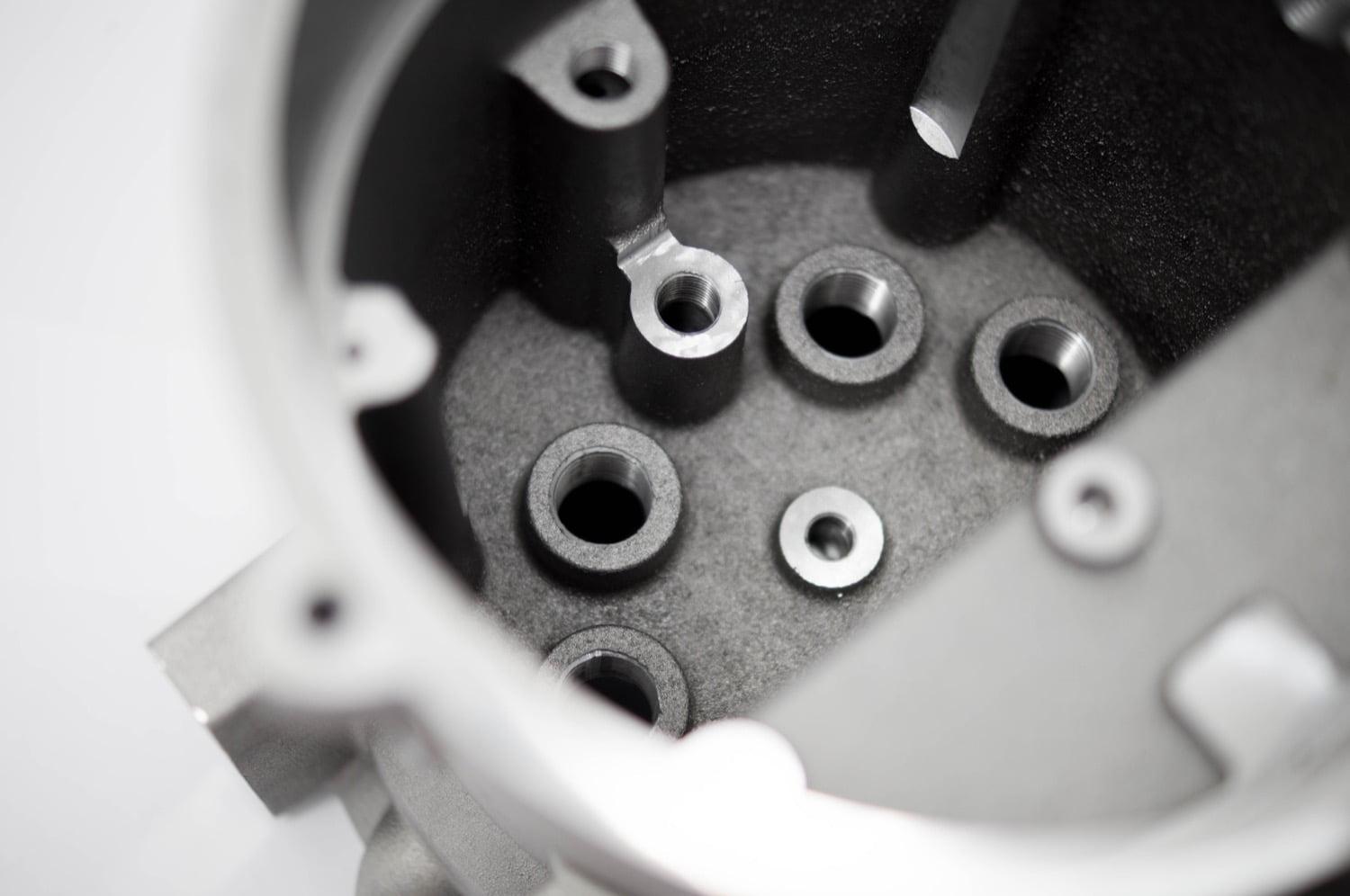Aluminum Foundry services that enhance your manufacturing output
Wiki Article
Checking Out the Innovative Processes Behind Modern Light Weight Aluminum Foundry Procedures
Modern light weight aluminum foundry procedures are undergoing substantial makeover. Automation and AI are improving manufacturing approaches, improving both performance and precision. The combination of 3D printing is streamlining mold and mildew development, while sustainability methods are becoming much more essential. Each of these advancements plays a crucial role in redefining the market. The ramifications of these adjustments expand beyond plain production performance. What possibilities and challenges lie ahead for light weight aluminum foundries in this progressing landscape?The Role of Automation in Light Weight Aluminum Foundries

Automation contributes to improved security criteria within the foundry atmosphere. By moving unsafe jobs to machines, human workers can concentrate on managerial functions and quality assurance, reducing the threat of mishaps. In addition, information analytics originated from automated procedures offer important understandings right into functional performance, causing much better decision-making and continual enhancement. As the need for aluminum products expands, the adoption of automation modern technologies will likely broaden, further changing the landscape of light weight aluminum foundry operations.
Developments in Casting Technologies
Current developments in casting innovations are transforming light weight aluminum factory operations. Developments such as 3D printing assimilation, advanced alloy formulations, and automated procedure optimization are improving efficiency and product high quality. These developments are essential in fulfilling the advancing demands of the market.3D Printing Assimilation
Integrating 3D printing innovation right into aluminum shop operations has transformed conventional casting approaches, improving both efficiency and precision. This cutting-edge strategy permits the rapid manufacturing of intricate molds and cores, considerably minimizing preparations and material waste. By utilizing additive production, shops can produce detailed geometries that were difficult or previously tough to accomplish with conventional techniques. The versatility of 3D printing likewise makes it possible for quick layout alterations, fostering an extra nimble production procedure. On top of that, this integration supports using light-weight structures, which is significantly vital in sectors such as automotive and aerospace. As aluminum factories continue to adopt 3D printing, they position themselves at the forefront of technological advancement, driving renovations in item quality and operational capacities.Advanced Alloy Formulations
The advancement of advanced alloy formulations has significantly enhanced spreading modern technologies in aluminum shop operations. These solutions incorporate numerous elements, such as copper, magnesium, and silicon, to boost mechanical residential or commercial properties and thermal resistance. By tailoring the structure of aluminum alloys, suppliers can attain details efficiency attributes that meet the needs of diverse applications, from auto elements to aerospace frameworks. The use of advanced alloys additionally adds to reduced weight and raised strength, which are essential elements in modern design. Additionally, technologies in alloy development make it possible for much better fluidity throughout casting, resulting in improved surface area coatings and lowered flaws. On the whole, progressed alloy formulations stand for a substantial leap ahead, placing aluminum foundries to satisfy the evolving requirements of different sectors effectively.Automated Process Optimization
Innovations in casting technologies have actually led the way for automated procedure enhancement in light weight aluminum foundry procedures. By integrating advanced software and real-time information analytics, factories can currently simplify production procedures and enhance top quality control. Automated systems keep track of variables such as cooling, pressure, and temperature level prices, enabling instant modifications that minimize issues and waste. In addition, artificial intelligence algorithms analyze historical performance information to forecast perfect settings, thereby enhancing efficiency and lowering cycle times. Robotics additionally play a significant role, dealing with recurring jobs that boost safety and security and precision. Overall, these developments not only drive functional performance but additionally make it possible for factories to meet the growing demand for top notch aluminum elements in various sectors.Smart Production and Industry 4.0 Assimilation
The combination of Smart Production and Sector 4.0 within light weight aluminum foundries is transforming functional performance. By leveraging IoT modern technologies, automation, and robotics, foundries can maximize production procedures and lower downtime. In addition, information analytics offers vital insights that boost decision-making and drive continual enhancement.IoT in Shop Procedures
As suppliers increasingly welcome the Internet of Points (IoT), shop operations are experiencing a transformative change towards clever manufacturing and Market 4.0 combination. Precision aluminum casting. IoT technologies allow real-time information collection and analysis, enhancing decision-making processes and functional efficiency. Sensing units and connected gadgets keep track of equipment efficiency, material use, and ecological conditions, permitting for proactive maintenance and source optimization. This connection promotes an extra dexterous production setting, where adjustments can be made promptly in response to market demands. Additionally, IoT facilitates enhanced traceability and top quality control, as information from the whole production cycle can be easily accessed and assessed. In general, the combination of IoT in foundry procedures significantly improves efficiency and drives development in aluminum production proceduresAutomation and Robotics Combination
Automation and robotics assimilation is revolutionizing aluminum shop operations by enhancing efficiency and accuracy. This transformative strategy simplifies procedures such as molding, pouring, and completing, minimizing human error and boosting result uniformity. By utilizing sophisticated robot systems, shops can attain greater manufacturing rates while maintaining stringent quality criteria. Automated systems also enable real-time monitoring and adaptive control, permitting her explanation quick modifications to production specifications. Furthermore, the combination of robotics minimizes labor prices and reduces safety and security risks connected with manual handling of liquified metal. As foundries welcome smart manufacturing concepts inherent in Market 4.0, the synergy in between automation and robotics strengthens their one-upmanship, leading the way for sustainable growth and innovation in the aluminum casting sector.Information Analytics for Performance
Harnessing data analytics substantially boosts performance within aluminum factory operations, straightening with wise manufacturing and Sector 4.0 principles. By leveraging real-time information collection and analysis, shops can monitor manufacturing procedures, predict equipment failings, and enhance source appropriation. This data-driven technique facilitates informative decision-making, making it possible for managers to identify traffic jams and improve workflow. In addition, anticipating analytics empowers factories to anticipate market needs, thus reducing waste and ensuring prompt product delivery. Assimilation of data analytics with IoT tools improves operational exposure, promoting a proactive upkeep culture. Eventually, carrying out these advanced analytical strategies not just boosts efficiency but additionally drives technology, positioning light weight aluminum shops to meet the developing demands of the market while preserving affordable sides in a swiftly changing landscape.Lasting Practices in Aluminum Spreading
While the light weight aluminum casting industry has actually generally faced ecological challenges, numerous foundries are now embracing lasting practices to reduce their influence (Aluminum Foundry). A significant emphasis has been on reusing aluminum scrap, which not only minimizes waste yet additionally preserves energy compared to key aluminum manufacturing. Ingenious melting technologies, such as induction furnaces, improve power performance and lower greenhouse gas emissionsAdditionally, shops are carrying out closed-loop water supply to lessen water intake and lower thermal air pollution. Making use of green binders in mold-making procedures is obtaining grip, additional lowering unsafe exhausts.
Moreover, some facilities are purchasing renewable resource sources to power operations, aligning with global sustainability objectives. By integrating these practices, the light weight aluminum casting industry is evolving towards a much more environmentally liable future, demonstrating that economic development can exist side-by-side with environmental stewardship - aluminum casting. These efforts mirror a commitment to sustainability and the significance of ecological responsibility in production
Quality Assurance Innovations
As the light weight aluminum spreading industry developments in the direction of sustainability, the value of quality control innovations becomes significantly evident. Modern light weight aluminum foundries are embracing innovative technologies to improve their top quality assurance processes. Techniques such as real-time surveillance and information analytics allow manufacturers to spot defects and variances early in the manufacturing cycle. Applying automatic examination systems furnished with machine discovering algorithms assurances check these guys out that items satisfy rigorous quality requirements while decreasing human error.The assimilation of non-destructive testing methods, such as ultrasonic and radiographic assessments, gives much deeper understandings into the honesty of spreadings without harming the product. These advancements not only boost product dependability however additionally reduce waste, aligning with sustainability goals. In addition, the adoption of standard high quality frameworks aids simplify procedures throughout various foundries, guaranteeing consistency in output. Collectively, these advancements are improving quality assurance, promoting a society of excellence within the light weight aluminum casting sector.
Future Trends in Light Weight Aluminum Foundry Procedures
What technologies exist ahead for aluminum shop procedures? The future of aluminum foundries is positioned for makeover via developments in automation, expert system, and lasting practices. The assimilation of robotics and automated systems is expected to boost performance and accuracy in the spreading processes, reducing human mistake and labor costs. In addition, AI-driven analytics will allow real-time surveillance and predictive maintenance, maximizing operational efficiency and reducing downtime.Sustainability continues to be a centerpiece, with factories increasingly embracing environment-friendly practices, such as using recycled light weight aluminum and developing low-emission melting innovations. Advancements in 3D printing are also expected to change mold-making, enabling complex geometries and lowered material waste. As the industry accepts digitalization, data-driven decision-making will become pivotal, making it possible for factories to react swiftly to market demands. Jointly, these fads guarantee to redefine aluminum shop procedures, making them much more effective, lasting, and adaptable to future challenges.

Regularly Asked Inquiries
What Precaution Are Implemented in Light Weight Aluminum Shop Workflow?
Aluminum factory operations apply numerous safety measures, including personal safety devices, air flow systems to take care of fumes, regular security training, emergency response plans, and strict tracking of temperature level and devices to stop accidents and guarantee employee security.Just How Do Foundries Handle Workforce Educating for New Technologies?

What Products Are Commonly Recycled in Light Weight Aluminum Foundries?
Aluminum shops frequently reuse scrap light weight aluminum, including post-consumer items like drink canisters, automobile components, and construction materials. This recycling process reduces waste and saves sources, contributing to a much more lasting light weight aluminum production sector.Exactly How Does Aluminum Spreading Effect the Setting?
Light weight aluminum casting influences the atmosphere through energy-intensive processes, greenhouse gas emissions, and potential neighborhood pollution. Innovations in recycling and sustainable methods can mitigate these effects, promoting a much more environment-friendly method to light weight aluminum manufacturing.What Are the Regular Lead Times for Light Weight Aluminum Casting Projects?
Common lead times for aluminum casting projects vary significantly, he has a good point usually ranging from two to 6 weeks. Factors affecting these timelines consist of intricacy, order dimension, and product accessibility, impacting total production schedules in foundry operations.
Automation progressively plays a vital role in aluminum factories, enhancing effectiveness and accuracy in the production procedure. Improvements in casting technologies have actually paved the means for computerized process improvement in light weight aluminum foundry procedures. Taking advantage of data analytics greatly boosts efficiency within light weight aluminum factory procedures, straightening with clever manufacturing and Market 4.0 concepts. A considerable emphasis has been on recycling light weight aluminum scrap, which not just lowers waste yet also saves power compared to key light weight aluminum manufacturing. Light weight aluminum foundries commonly recycle scrap aluminum, including post-consumer items like drink containers, vehicle components, and building and construction materials.
Report this wiki page